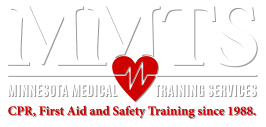If someone asked you to name a lifesaving skill, the first thing you’d likely say is CPR. After all, heart disease is the leading cause of death, and CPR deals directly with it. Also, whenever someone is saving another person’s life in a movie, it always seems to end with CPR and/or mouth to mouth.
While CPR is certainly important, and it’s something everyone could benefit from learning, there are other critical lifesaving skills that people should learn.
What is Basic Life Support?
Basic life support (BLS) is a set of skills and knowledge that covers pre-hospital response. This is the same type of training given to EMTs and other first responders. However, you can’t always rely on medical professionals to be nearby.
By knowing BLS skills, you could save the life of a friend, a family member, or even a complete stranger. Here are some situations where BLS skills come into play:
Choking
Choking can happen to anyone at any moment they’re consuming something. The most innocent piece of food can suddenly find itself lodged in the windpipe, cutting off precious oxygen. Without assistance, the victim can quickly lose their life.
With BLS training, you can learn the proper technique of the Heimlich maneuver so that you can clear the person’s air passage of any foreign objects. Though it may seem straightforward, there are specific actions to maximize effectiveness.
Also, the technique used on children and infants is slightly different. Professional training can teach you what to do.
Drowning
Even an experienced swimmer can suffer from drowning if they’re caught in an undercurrent or lose consciousness while in water. That’s why drowning is one of the most common causes of accidental death, particularly with children.
BLS training can not only teach you how to revive a drowning victim, but how to get the person out of the water successfully.
Carrying/Moving/Transporting
Often times, in emergency situations, a person will need to be moved to a safer location. This can be difficult to assist with if the person is larger than you. However, there are ways to safely and successfully move a larger person.
There are also times where you shouldn’t move a person, unless it’s under extreme conditions. BLS training can teach when to move someone and when to leave them in place.
Staying Warm
Keeping a body warm is critical, especially in the winter months. When a body gets too cold, it can be susceptible to muscle, skin, and nerve damage, as well as cerebral impairment. With BLS, you can learn the signs of hypothermia, and how to best keep a body warm.
Controlling Bleeding
When a person is bleeding, it’s important to stop the flow before too much blood is lost. Depending on where the cut is and how much blood is coming out, the technique for stopping blood loss can change.
Exiting a Burning Building
Should a fire ever break out in a building you’re in, someone will need to take charge and lead everyone out. This is a terrifying experience, and a calm, confident mindset is needed to get out of it. With the right training, the life you save may be your own.
Get BLS Certified Today
With proper BLS training, you can be ready for most emergency situations people face every day. For BLS and CPR classes in MN, visit our public classes page here. We’re also available for onsite training. Contact us today.

